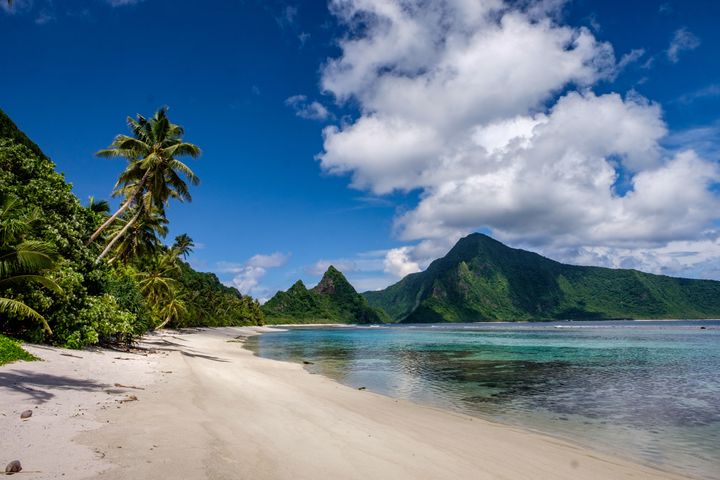
Ofu Beach has been called one of the top ten most beautiful beaches in the world.
When thinking of the U.S. national parks, you probably don’t think of an island group south of the equator. Yet, halfway between Hawaii and New Zealand there it sits – a protected parkland in the South Pacific that was established to preserve unbleached coral reefs, tropical rainforest, fruit bats (also known as “flying foxes”) and the Samoan culture.
The National Park of American Samoa is another that is born of superlatives. It is one of the five least visited in the system. It is the farthest west and the farthest south. It was the first park to be established in the southern hemisphere. The way that we love our vast stretches of land in the contiguous 48, the Samoans think of the water in that same way – their land is the ocean.
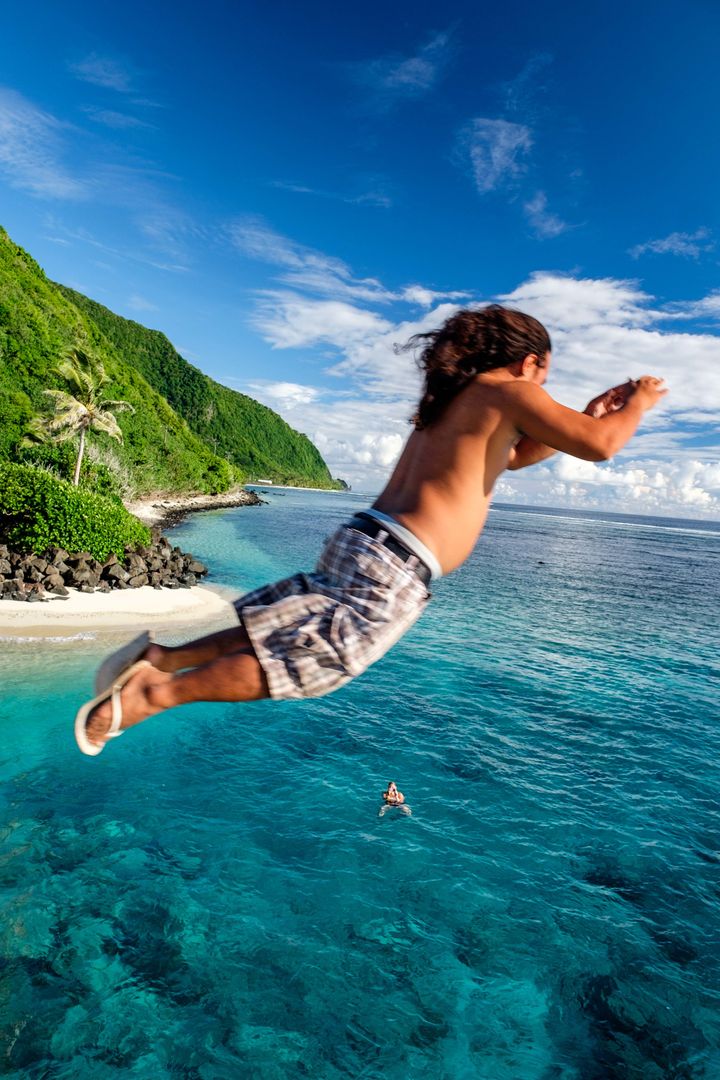
National Park Service Ranger, Rickym catapults from the bridge connecting Ofu and Olesega Islands.
The park resides on three islands – Ta‘ū, Ofu (both part of the Manu’a Islands chain); and Tutuila, which is home to the capital city, Pago Pago. Ta'u is said to be the most traditional of all islands in American Samoa. Ofu is home to pristine sandy beaches and coral-rich shorelines. Tutuila is where this park’s Headquarters are, where you can get the low-down on how to approach a variety of trails in the area. It also offers the best taste of modern American Samoa (and incidentally, has the most services.)
To be candid, this isn't a destination suited for everyone. It is a long voyage to get to American Samoa, and even longer to get to the outer islands. It is incredibly hot and humid – you could cut the air with a knife. There are tons of mosquitos and other insects to keep you company. There are few restaurants to speak of off of the main island and it can be a challenge to find things you might need. This is not Hawaii. And it is not trying to be. Samoans are committed to preserving their unique culture, their land and seas, and with that comes experiences that are completely authentic. So, if you are down for an off-the-beaten-path island adventure that will give you a dose of culture shock with your perfect wilderness, put a visit to American Samoa on your short list.
OFU

A beautiful sunset near Ofu beach.
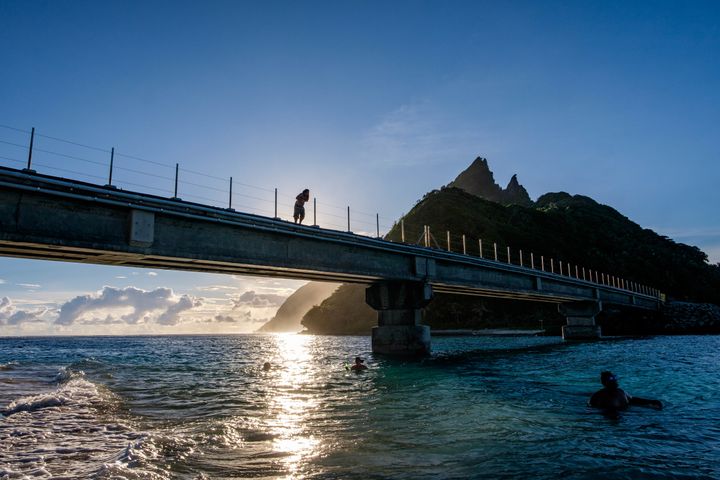
Bridge jumping into crystal clear South Pacific waters on the only bridge in American Samoa. It connects the islands of Olesega and Ofu — one of three islands with protected parkland.
On the island of Ofu you will find a four-mile stretch of pristine paradise beach that is often ranked among the top ten most beautiful beaches in the world. Because of its remote location on an unpopulated island, coral ecosystems thrive inside of a glittering ocean. The coral reef at Ofu Beach is especially unique because it doesn’t suffer from coral bleaching the way, say, the Great Barrier Reef in Australia does, which makes it an important case study for climate scientists. It is also a magnificent place to snorkel! Aside the sea is a perfect beach. Noisy tourists? Nope! There on the powdery sand beneath tropical palm trees that reach out to the sea, you will feel as far away from where you came from as one possibly could.
The island of Ofu is connected to its sister-island Olesega by the only bridge in Manu’a. The bridge is infamous in that locals and visitors love to jump from its rail into the crystal waters below. Have no fear, the water below is deep enough that it is not dangerous, but shallow enough that you don’t feel like a buoy bobbing in the middle of the sea, and the current running beneath it brings you straight to a white sandy beach where you can relax before its time to make the jump again.
TA’U
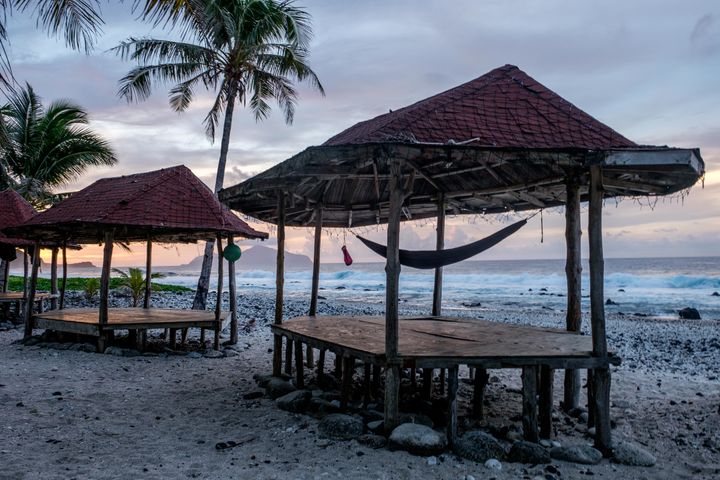
An open air "Fale" structure on the south side of the island outside on Ta'u.
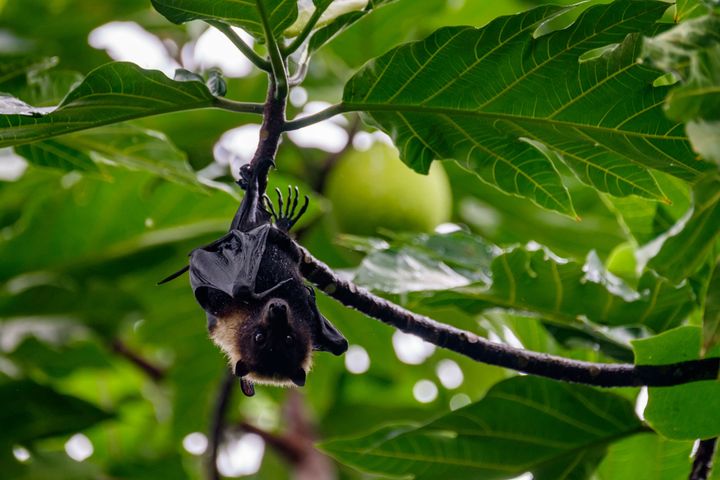
Protection of fruit bats (also called “flying foxes”) is one of the main reasons the national park was established.
T'au in the Manu’a Islands chain is considered the most traditionally Samoan of all of the islands. Bushwhacking through the wilderness in the back of a pickup truck, you will explore a jungle landscape among ruins, incredible island wildlife, and the national park shore where you can peer off into the Pacific expanse. Atop the 3,000 foot Lata Mountain you can catch a glimpse of sea cliffs that are among the world's tallest. There are only three villages on Ta'u and tourism is virtually non-existent there. Though bereft of modern conveniences, wonderful people are everywhere – eager to show you the hidden heart of Samoa. Our guide was exceptional (thank you Keith!), showing us the national park and introducing us to the people who call Ta'u home. If you want to explore rugged, wild, untamed wilderness while meeting local people, T’au is the place to go. And it's an easy boat ride to Ofu, just a couple of hours away.
TUTUILA & PAGO PAGO
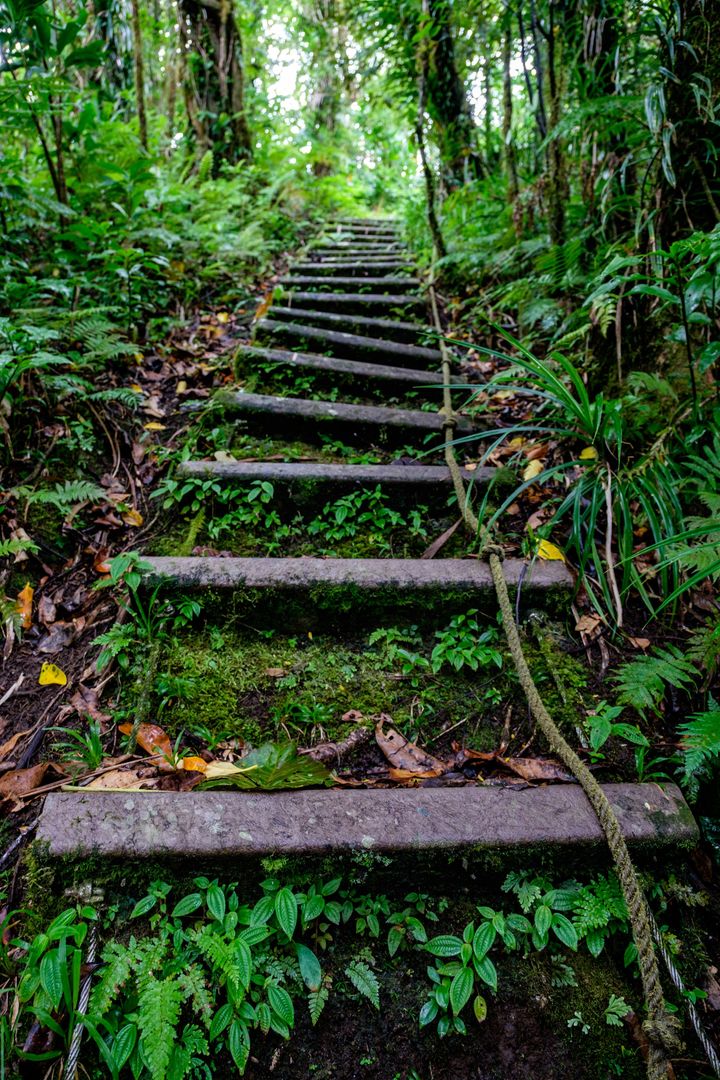
Obstacle course wilderness trail near Pago Pago in American Samoa found at Mt. Alava. Feel the burn!
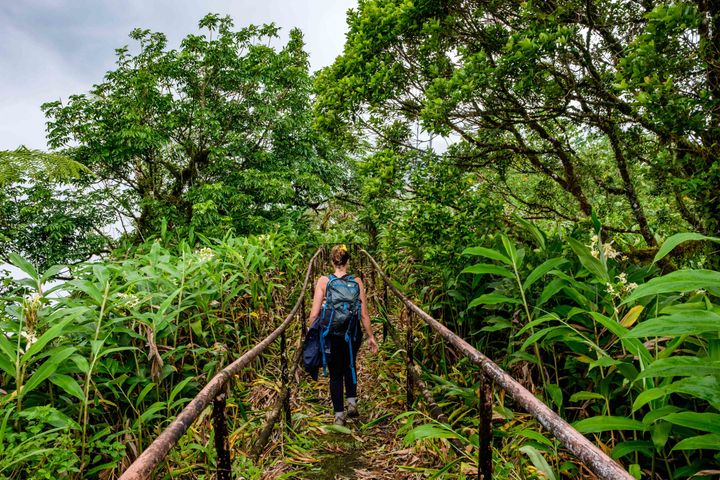
Descending the Mt. Alava wilderness trail on the island of Tutuila, outside of Pago Pago.
On the main island of Tutulia in Pago Pago (pronounced Pah-ngo, with a silent “n”) there is a nice network of trails leading you shoreside and to areas that rise above the bay. The most immersive and exciting (and also the most challenging) is the Mt. Alava Adventure Trail, where ladders fixed to the side of mountain ridges allow you to scale jungle walls while climbing a total of 1,600-feet. At the Mt. Alava overlook, gorgeous views of the island stretch out before you in all directions.
For 2,000 years, Samoans have, out of necessity, used hiking routes through what is now the national park. Today, locals think that visitors looking to hike those same trails are a little bit mad... because of the intense heat and humidity, they climb those mountains only to hunt or when making land crossings to other villages.
A stop at the Visitor Center is a must to get the most out of your time on Tutuila, as many of the sites are a bit scattered. It is located across from the Pago Way Service Station, where you can file in to the local scene while using public transportation to get to trails in the area.
Clearly, each area of national parkland in American Samoa provides a completely unique experience. If you are going to fly all the way there, we recommend taking time to see all three of the islands. By the time you are done, you will not only have seen everything that the National Park Service aimed to protect there, but you will have also learned about the region from those best equipped to share it – the Samoan people. This park is really special… offering a fine mix of international travel and America's Best Idea.
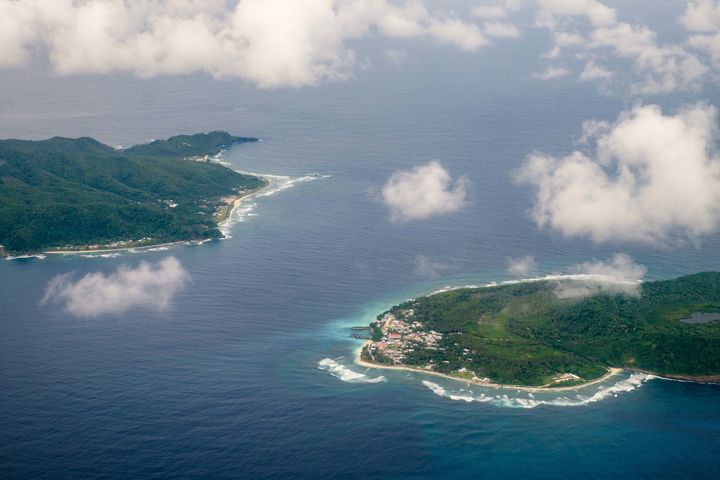
The National Park of American Samoa is located on three islands: Ta‘ū, Ofu (both part of the Manu’a Islands chain); and Tutuila, location of the capital city of Pago Pago.
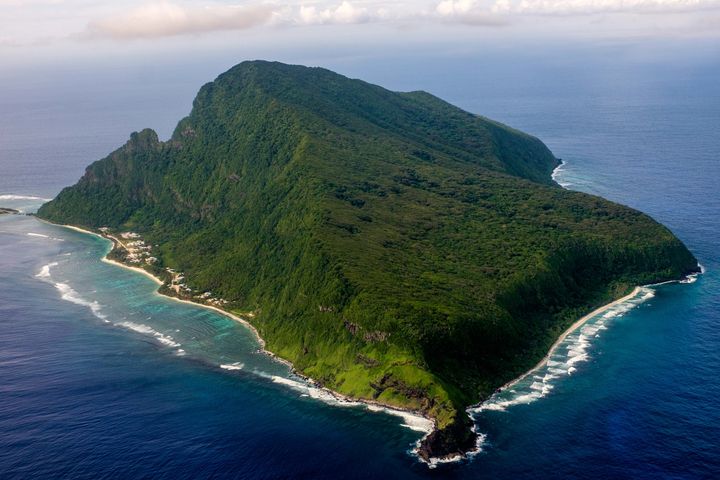
Passing the island of Olesega on the way to Ta’u in the Manua Islands chain.
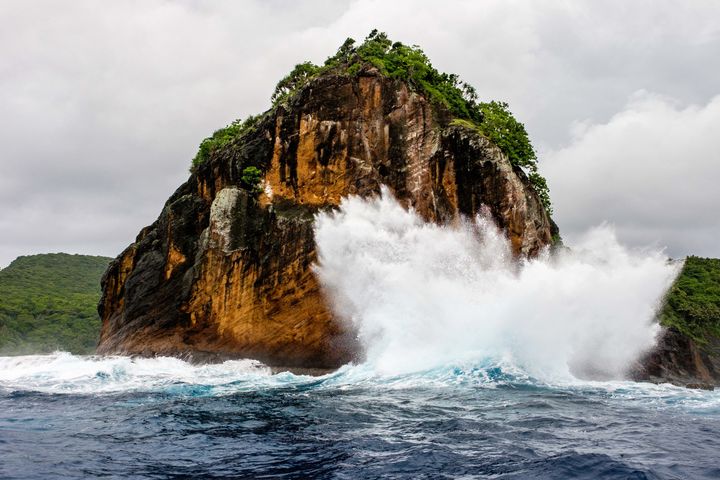
Waves crash into rock formations en route to Ofu Island.
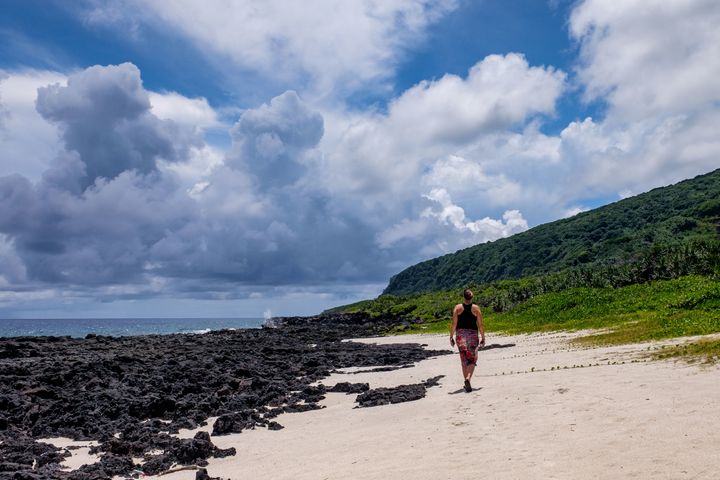
Walking on the island of Ta'u in the National Park of American Samoa.
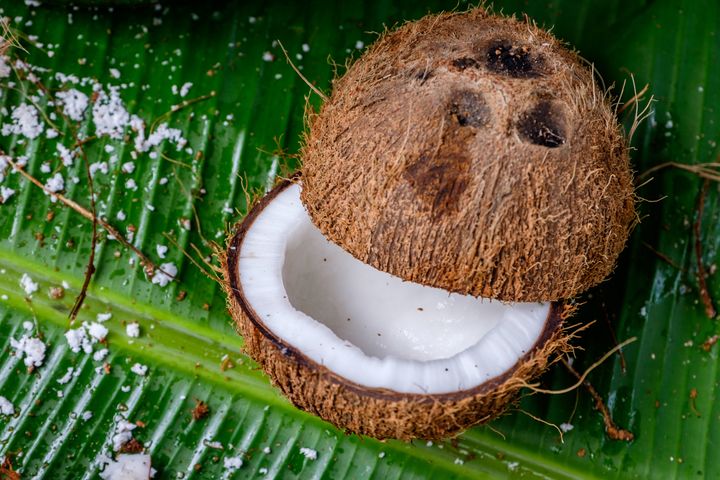
A perfect coconut for our traditional “umu” feast (umu means “Earth oven.)
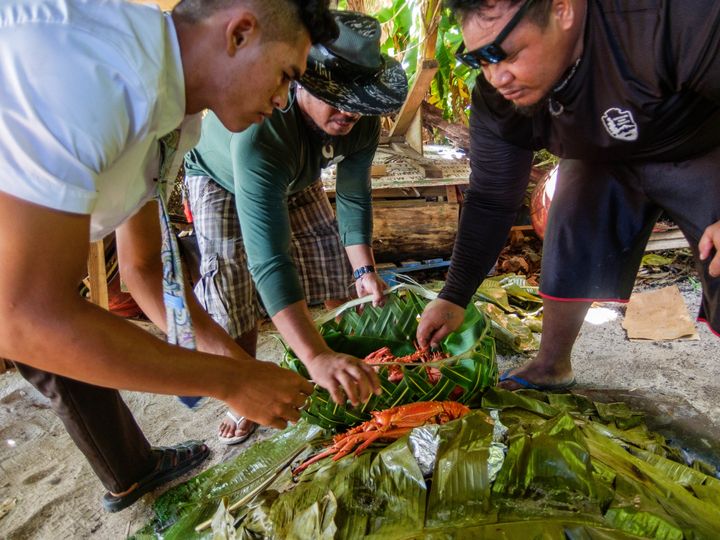
Unearthing the Earth oven.
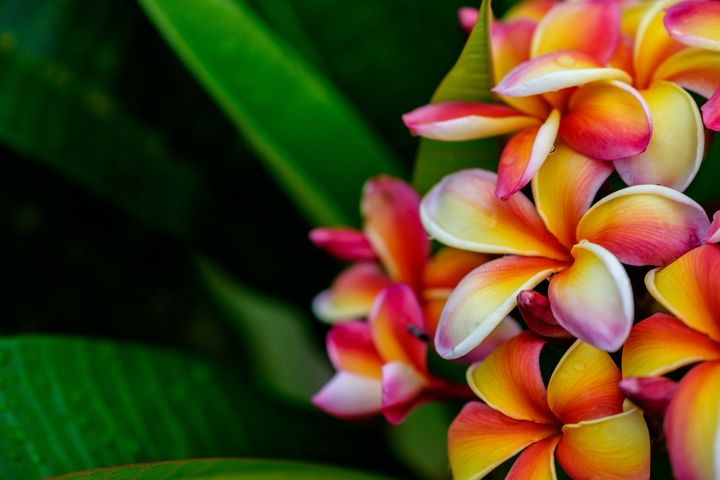
Tropical flowers of all kinds accompany your visit to the islands.
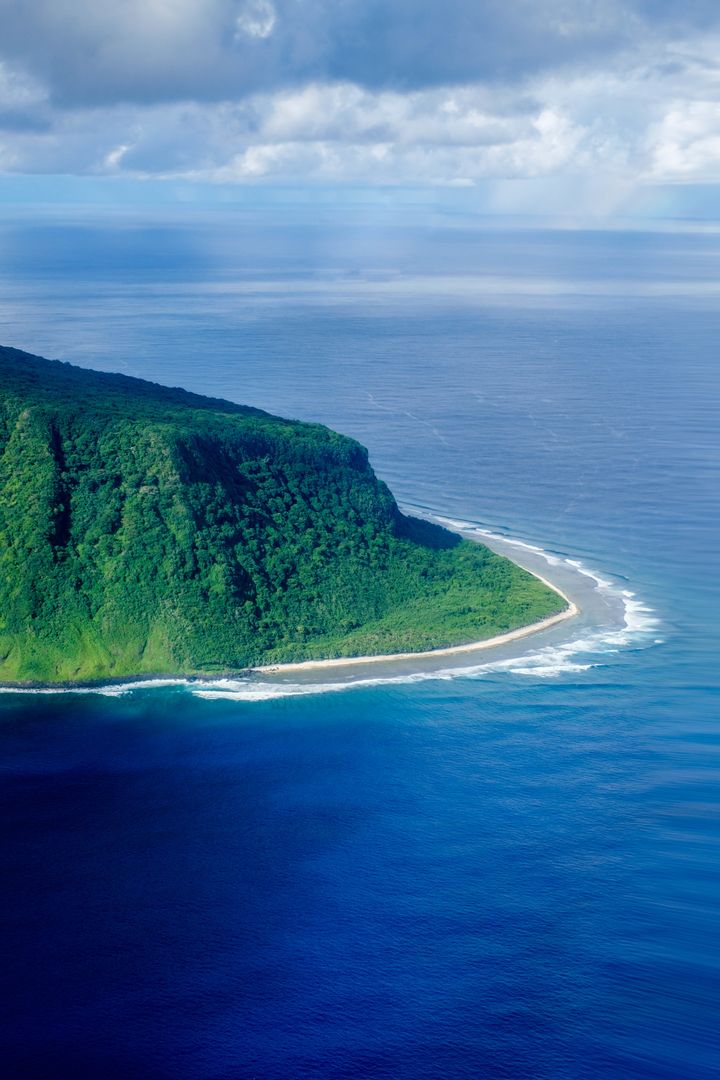
American Samoa is everything you dream that this region in the South Pacific would be: wild, cultural, dreamy, untouched, and enchanting.
